With the start of the world and political unrest domestically, more and more women are choosing to protect themselves. Learn, train and survive.
Author Archives: staff-writer
How To Choose The Best Instant Tent For Camping
Instant tents take the hassle out of camping due to how easy they are to carry around and set up. However, with a few different types available, it can be tough picking one for yourself. In this article, we’re going to help you make the right choice when it comes to instant tents, and cover all the basics that you need to know.
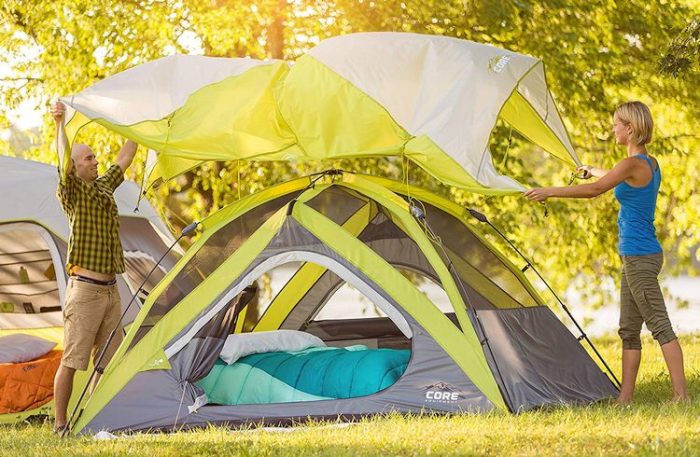
Instant Tents – What Are The Benefits?
Ease of Use
Instant tents are just what they sound like – they can be pitched in no time at all, thanks to the fact that there are poles already attached to the body. Hence, even first-timers can set up camp without anyone’s aid or having to read through a manual.
Price
An instant tent for camping can vary in price from cheap to very expensive, depending on the brand and the size. As a result, you can find several that fit your budget.
Time-Saving
Imagine there’s a storm approaching and you need to set up a shelter as soon as possible. With regular tents, there’s a high probability of you getting soaked before you’re done pitching them. If you’ve got an instant tent, on the other hand, you’ll be done in less than a minute!
Freestanding
This means that you’re able to pitch an instant tent on any terrain without needing to stake it down. As a result, you can always adjust the position if necessary. However, when winds are particularly strong, it may be a good idea to go ahead and pin the tent down with stakes.
What Size Is Right For You?
Instant tents come in both large and small sizes. If you go camping with friends or family, then it might be better to go with the former. However, that isn’t the only reason to go for a larger tent. If you’ve got claustrophobia, for instance, the extra space can help you feel more comfortable.
The only drawbacks with larger tents are that they tend to be pricier and can be harder to carry around.
Which Type Of Instant Tent Should You Pick?
There are two main types of instant tents to choose from – cabin and dome. Let’s take a look at each:
Cabin Tents
These come in either square or rectangular shapes (hence the name) and are usually able to house anywhere from 6 to 12 people. In addition, cabin tents usually have tall ceilings, allowing people to walk around without having to hunch. In addition, the roof is made out of mesh materials, which means that you can stargaze at night.
Typically, cabin tents come fixed with strong poles that can stand their own against the roughest winds. On the flip side, cabin tents do come with a couple of downsides. First of all, they’re quite heavy to carry around. Secondly, they can’t be repaired easily if something breaks. Due to the size, it may be difficult for just one person to pitch a cabin tent without help.
Dome Tents
These are much smaller than cabin tents, meaning that you can’t walk around in them comfortably. However, there are quite a few pros to having these type of tents. For starters, they can be set up in a minute or so, while cabin tents take longer. Plus they’re lighter as well, while still being able to withstand rough winds. Furthermore, they just require one person to set up.
At the same time, there are a couple of negatives, like being unable to take them apart to make it easier to carry. In addition, you have to keep it fixed in the ground while it dries.
Instant Tents With Screened Porches
You’ll come across instant tents that contain screened porches. These are ideal for summer and spring camping because you can let in some sunlight without having to open up any flaps. Hence, you don’t need to worry about bugs getting inside the tent.
Are Fast Pitch And Instant Tents The Same?
Even though the names sound similar, fastpitch tents are not the same as instant tents. In fact, there are quite a few differences between the two. The biggest is that the fastpitch is faster to set up. This is due to the fact that the poles are pre-assembled inside the body, unlike instant tents. In addition, most fastpitch tent models come equipped with a hub as well.
In Summary
Instant tents can make campers’ lives much easier, considering all that they offer. To begin with, they’re very quick and easy to set up – so much so that even amateurs can make do without any instructions. In addition, they are freestanding and come in a variety of price ranges and sizes.
The two types – cabin and dome are suited for different scenarios. The former is more suited for larger groups while the latter is perfect for the single camper.
Lost In The Wild: Survival Skills That You Can Always Depend On
A close friend who was reported missing for several days made it back and recounted his ordeals in the Amazon. Surely, he would not have returned alive if he hadn’t some survival skills. Not many people hope to be lost in the wild. People may lose their way for many reasons such as hunting or hiking in unfamiliar locations, after some mishap of shipwreck or air crash, or even a war situation. Sometimes, one could even decide to get lost in the wild just to test his ability to survive!

You owe your survival in the wild to two major factors: Luck and your survival skills. If you do not want to gamble with your life, then you should acquire some basic skills in preparation for any sticky situation. Below are ten survival skills that should get you going:
Skill #1: Constructing a Shelter
Constructing a shelter helps you in several ways. It shields you from the harshness associated with the wilderness. Life is easily taken out by hypothermia than starvation or dehydration. You can build your shelter by leaning logs of woods against the main structure and then pile debris from the ground and leaves on top of it. You generally need some tools when building a shed. Ensure that the ground of the shelter is dry (probably spread with dry leaves). Your shelter should be designed in such a manner that it protects you from the cold ground, open-air and wind.
Skill #2: How to Find a Source of Water
Once you are in the wild, the first thing you should do is to find water. Bodies of water are always located in earth depressions or valley between mountains. The reason is that water flows downhill. Let your compass be your guide as you wander away from your base where you have always constructed a temporary shelter.
Where water is not located, you then have to dig up the earth in the valley a foot deep or more and place lined leaves or a piece of clothing inside it to filter the water as it gradually fills the small pit.
Skill # 3: How to Search for Food
In terms of surviving while lost in the wild, one has to source for food to replenish the out-burning calories in the body. Although human beings can stay for weeks without food, there is still the need to eat to get refreshed with needed energy.
Think of food that you could easily find in the wild. However, if you had found a large body of water, using your fishing hook to get fresh fishes for protein readily comes to mind. Besides this, you can make some animal traps in the forest. Other tips to finding food include tracing of trees that have edible inner bark. The wild is filled with such trees. Your knowledge of some local nut trees makes it easier for you to find them in the wild.
Skill #4: Igniting a Fire
Your ability to make fires while in the wild is essential. Fire would give you warmth. When you are wet or in a chilling cold night, five to ten minutes of warmth from the fire can save you from possible death caused by hypothermia. Striking one stone against the other over dried and rusty leaves severally in quick succession will spark off the fire. It is more advisable to acquire the easier method of making fire, which is through the bow drill skill. As soon as a fire is made, keep it burning throughout the night and the days that follow. Fire will help you make food, keep you warm, and scare away predators.
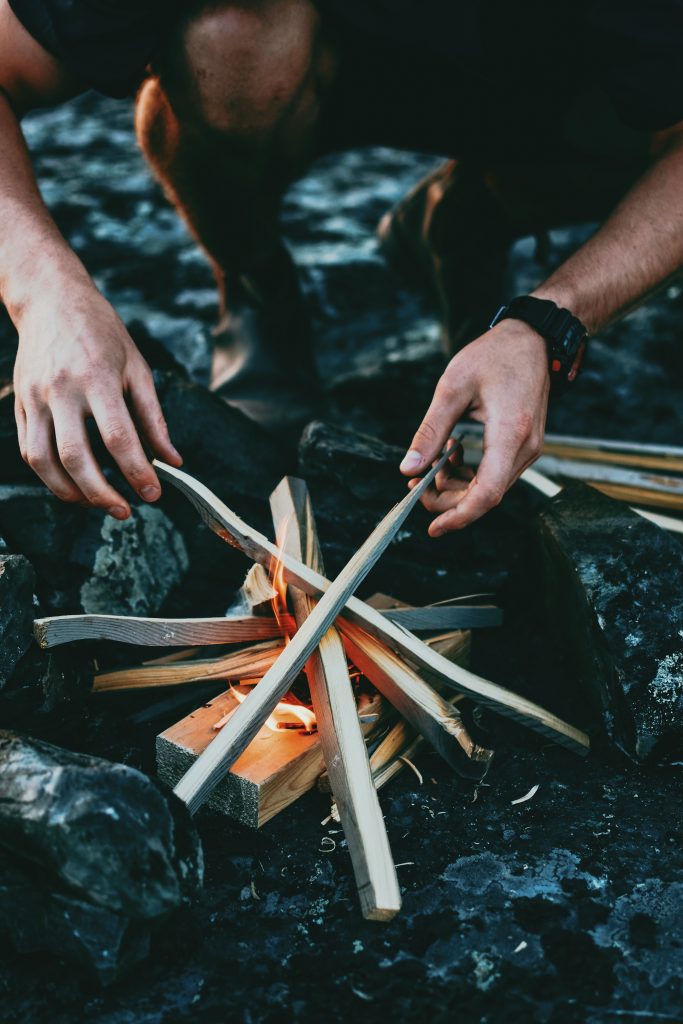
Skill #5: Sending Smoke Signals
Remember the stories of ancient Red Indians, who were skilled in sending messages across miles with sending clouds of smoke into the atmosphere? You do not have to be like the Red Indians anyway. All you need to do is to choke your fire with dried leaves to send up cloudy smoke into the atmosphere during the day. This will enable possible rescuers to spot your location in the wilderness easily.
Allow the upward flow of smoke to rise consistently into the air when you are trying to attract attention and help. This smoking skill is normally done in broad daylight upon mountaintops.
Skill #6: Water Discipline
There might be a scarcity of water, especially if you find yourself in desert prone areas. All you need to do is to maintain a high degree of water discipline, which means drinking one or two mouthfuls of water and carrying it for a very long time before taking another gulp of water.
Surviving in the wild requires taking drastic measures as well. Perhaps, you may have no option than to drink your urine in places where there is an absolute lack of water.
Skill #7: Self-Disguising
An enemy might be lurking around the forest. You need to disguise yourself by hanging on some green leave around your body. As you move around the greenish bush on green leaves, you will be hardly noticed. You may need to rub your face and hands with either mud or charcoal.
Skill #8: Herbal Knowledge
Good knowledge and use of medicinal herbs is yet another skill you need to acquire. Knowing where to source for these herbs in the wild will help you boost your immune system against fever and infections.
Skill #9: Follow Water
Life largely depends on water. So if you ever find where there a stream or river, follow its flow. Chances are that you are likely going to meet a settlement of people who depend on the river for their survival.
Skill #10: Maps and Compass Reading
Reading of maps with a compass will be very helpful while navigating your way in the wild. This tool never disappoints, as it continues to work under any sort of weather condition. Even where you do not know how to read a map or use the compass, you just have to follow the tip pointing to the North Pole to get to your destination. Sometimes, you may climb a high ground to see where you are heading.
The Eleventh Skill – The Survival Tools/Weapons: You will require a tool or more to complete each of the above mentioned tasks. Most importantly, you need some sort of weapon to defend yourself when the need arises. Since you cannot carry a big box of tools and weapons around, I’d recommend you always carry a portable survival knife with you. Knifing skills should be the first anyone should acquire in preparation for survival in any environment. Quality is a very important factor to consider when choosing a multipurpose knife. Only the best survival knife can be used to cut sticks and thick tree barks, catch fishes, dig holes, tear meat, fight off predators and help you through any sticky situation. I have a personal resolve to always carry a good pocket knife along with me.
In summary, you’re better off not getting lost at all. But should you miss your way in the wild at any time, with these basic skills, you stand a chance of returning alive with an interesting survival story.
5 Legal Self Defense Weapons You Should Consider Buying
Whether you are at home or traveling, safety matters the most. After all, you would not want to be attacked or threatened at any time. The best way to deal with the risks is by having a self-defense strategy in place. While you can learn some physical tactics, carrying a weapon or two can make you feel safer and more confident anywhere. But you would want to carry only the ones that are legally permissible because anything that is not can get you into trouble with the authorities. Here is a list of legal defense weapons you should consider buying for being safe everywhere and at all times.

Pepper spray
Perhaps the best weapon that you can carry for being safe while you commute and travel is pepper spray. It is lightweight and easy to carry as you can just slip it into your bag or pocket. Moreover, pepper spray is easy to take out and use when you are in potential danger. There is a good choice available if you want to pick the level of potency, though even the lightest one can be highly effective.
Tactical knife
A tactical knife is small in size yet effective and easy to use when it comes to defending yourself from an attacker. You can choose a flip open variant or one that can be carried in a holder on your side. Flip open knives are easy to conceal while the side-holder ones are easier to access when you are in danger. Tactical knives, though, are not legal everywhere.
Stun guns
Stun guns are effective self-defense weapons that enable you to shock the attacker. Since these are non-lethal, you need not fear legal restrictions in most of the places. While even a basic one would give you good protection, look for an advanced product like TASER X2 if you want to be extra sure. These guns are widely used by law enforcement professionals through even civilians can use it.
Tactical pens
A smart self-defense weapon that you can carry everywhere is a tactical pen. It looks like a pen but is capable of doing much more. The impact edges are designed to dissuade attackers while it has LED lights as well. Moreover, the tip of a tactical pen can cut glass and help you to escape if you are abducted.
Personal alarms
Not exactly a weapon, a personal alarm is still something that can keep you safe in adverse situations. A whistle is the best example of a traditional personal alarm. However, there are high-tech ones that you can use to send across an alert to the authorities when you are attacked. Some alarms are even equipped to share your location so that you can get help on the spot. Look for a small and easily accessible one that you can reach when you need it the most.
Since these weapons are non-lethal, you will not get into legal problems by using them. Still, carrying them makes you feel confident as you can use them for being safe all the time.
A Quick Guide On How To Choose The Right Holster Bag
As an avid hunter, you will probably know the importance of carrying the right equipment on hunting trips. Of course, your firearm will figure on the top of the list but you need to make sure that you have a perfect holster bag too. After all, you cannot just carry around your gun all through the trip. You need something that conceals the weapon and ensures that you carry it safely and conveniently. So how do you decide that a holster bag is just perfect for you? Here are some tips that can help you choose the right one for your hunting trips.
Concealment matters the most
Welding around a gun is never a great idea because it gets you undue attention. This is the very reason why you would want to buy a holster bag in the first place. Opt for one that is discreet even while being easy to access when you need to draw out the weapon suddenly. Besides concealing your weapon successfully, it should also provide all the safety and convenience that you want.
Prioritize a durable material
A holster bag is not something that you would buy every day because you expect it to last for years. So it is always good to prioritize durability while looking for a sturdy material that does not tear or rip easily. Make sure that the material is capable of bearing the brunt of rough use, which is something common for hunting trips. The zips and buttons should be strong as well.
Look for extra storage
Besides safety, accessibility, and durability, ample storage is another thing that you should consider. Ideally, you should look for one which stores more than your gun. Picking an option like Marom Dolphin Star Bag is a good idea because it has multiple pockets that can store stuff like your cellphone, wallet, first aid kit, and extra magazines.
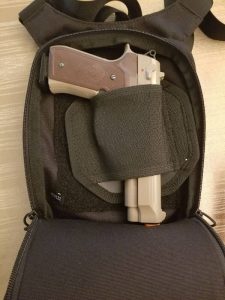
Test for ease and safety of a draw
Before you buy a holster bag, test for ease and safety of draw. After all, you would not want to fidget with the bag at the time of an emergency. Make sure that you are able to pull out the weapon effortlessly at the moment you need it. Also, safety matters a lot because there is always a danger of making a mistake when you are in stress.
Consider the price
Finally, consider the price of the bag in addition to its features and functionalities. You will probably have a budget to start with and want something that fits into it. At the same time, make sure that you do not compromise with quality just to save a few dollars. Look for something that is stylish and lasting but does not dig a hole in your pocket.

Following these smart tips will surely help you choose the best holster bag out there. Before you pick one, do try the size as well because you would not want one that is too big or too small. Also, make sure that it is strong enough to bear the weight of the firearm.
10 Most Important Boating Accessories for All Your Boating Needs
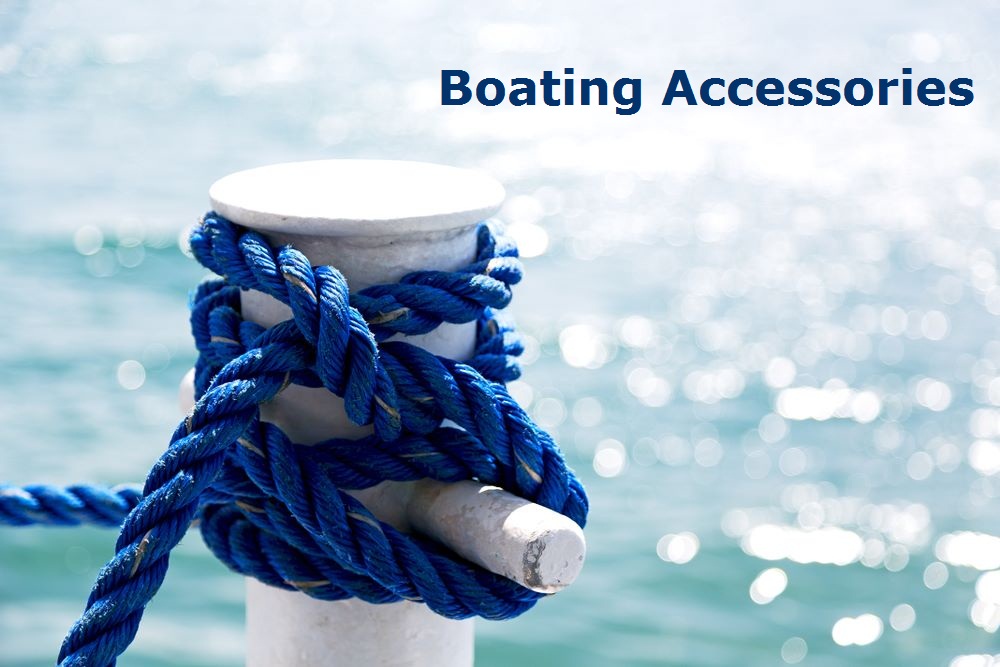
Who doesn’t enjoy boating? Floating on a boat in the middle of a beautiful lake at sunset is sure to give you the rejuvenation that you’ve always longed for. But when boating, safety comes first. You need to choose the right functional accessories. You do not want to be troubled by flimsy accessories and gears while boating. Boating requires you to make a quality investment in boating accessories, which would help in increasing the life of your boat in general. So, listed below are 10 key boating accessories from which you can benefit and would not want to forget while going for a trip to the waters –
- Personal Flotation Device (PFD) – If fishing is your hobby; a PFD cannot be dispensed with. You must have one flotation device for every person on board. Make sure that the life jacket is USCG approved. You can also keep throw cushions on your boat, which are mandatory in some states.
- GPS Devices – A GPS device like a GPS-Emergency Position indicating Radio Beacon (EPIRB) or PLB (Personal Locator Beacon) is important installations for your boat. These devices can communicate your exact location to search and rescue satellites. These work even on inland waterways. It is not uncommon for your phone’s battery to die or become dysfunctional due to an accident on the boat. These devices come handy when your phone runs out of the network coverage area.
- Phone Charger – It won’t be an understatement to say that our phones have become an indispensable part of our lives. The need to use it may arise anytime and so a 12-volt charger comes handy then. Some people even install solar-powered phone chargers. For Example – You may have to use your phone as a flashlight. But what if the battery of the phone runs out altogether? In this case, a phone charger or more suitably a power bank would be a helpful option.
- First Aid Kit – One of the most underrated items that ought to be carried are mostly the first aid kits. Do not underestimate its functionality and always keep one in your boat. It is one of the most important boating accessories. The palm-sized container can store bandages, antibiotics, antiseptics, scissors, tweezers, adhesive tapes, flexible adhesive bandages of several sizes, etc. Sterile tools are also packed and they should be used when a medical need arises.
- Polarized Sunglasses & Fishing Shoes – Protecting your eyes from the harmful UV rays is a must on a sunny day. There are variants of sunglasses that are available for offshore, inshore and cloudy days, which is for you to choose. You should not forget to buy a pair of anti-skid non-marking shoes. They are always better than flip-flops. They cover your feet and keep them protected from fish hooks or pokes, gears and fish fins as well. You wouldn’t want to ruin your experience because of a pair of shoes and a pair of sunglasses. Would you?
- Marine Radio – These are tremendously convenient devices as they are independent of a boat’s electrical system. A marine radio can transmit information about the weather, the boat traffic or the movement of large commercial vessels. Mishaps and accidents can occur in seconds and you would never want to be caught in one because of erratic weather conditions. To be self-sufficient and not dependent on the help of local authorities is a good plan. These radios come preset with major international and all local maritime frequencies.
- Correct Anchor – The anchor which you choose for your boat must be according to the size of your boat. You must also take into consideration the location where you plan to set sail. Preferably, you may buy an anchor which is larger than the size recommended for your boat. This is when your boat is not too tiny. Most anchors adjust to the sea bed or the floor of the lake. The length of the chain or rope is what helps to pull and fix a position for your rest. Make sure that it is adequately long. The fluke and grapnel type are recommended based on many experiences and knowledge.
- Waterproof Dry-Bag – This is undoubtedly one of the best companions of a sailor. It can carry your clothes, electronics, devices like phone and camera and food! These items are travel essentials and you do not want excessive sunrays, water or dust to ruin them. It is practical and thus recommended to carry them safely in a waterproof dry-bag. They come in several shapes and sizes and even high-quality ones are available for an inexpensive price.
- Basic Tool Kit or A Multi-Tool – A good tool kit or a set of tools is paramount and one of the best investments on boats. They contain replacement fuse, tapes, wrench, pliers and different sizes of screw nuts and bolts. They fix small problems on the spot and you can feel much relaxed and have a comfortable boating experience. They are to the boat what a Stepney toolkit is to a car. Buy a high-quality mechanical tool kit ideal for boats and marine applications.
- Ropes/Dock Lines – There are numerous situations when you would need ropes as boating accessories. You should keep a decent number of these on board. If anchored out with other boats, they come handy to tie-up with them. If your boat needs to be towed, a sturdy rope will be functional. It might be helpful when you need to tie your boat to a post. They will also be helpful if you are caught up in mechanical troubles.
But gathering these one by one would be a tedious and time taking task. So where do you go? A one-stop destination for all your boating accessories is RS Marine. They provide high-quality products with unparalleled functionality. They build tools for boating enthusiasts which are realistic, resourceful and reliable.
5 Essential Tips on Surviving Your First Hiking Trip
Hiking is literally not a walk in the park. It involves walking on trails of various terrains, elevations, and steepness. Given the right weather conditions and preparations, even a couch potato can successfully complete or even enjoy a hike.
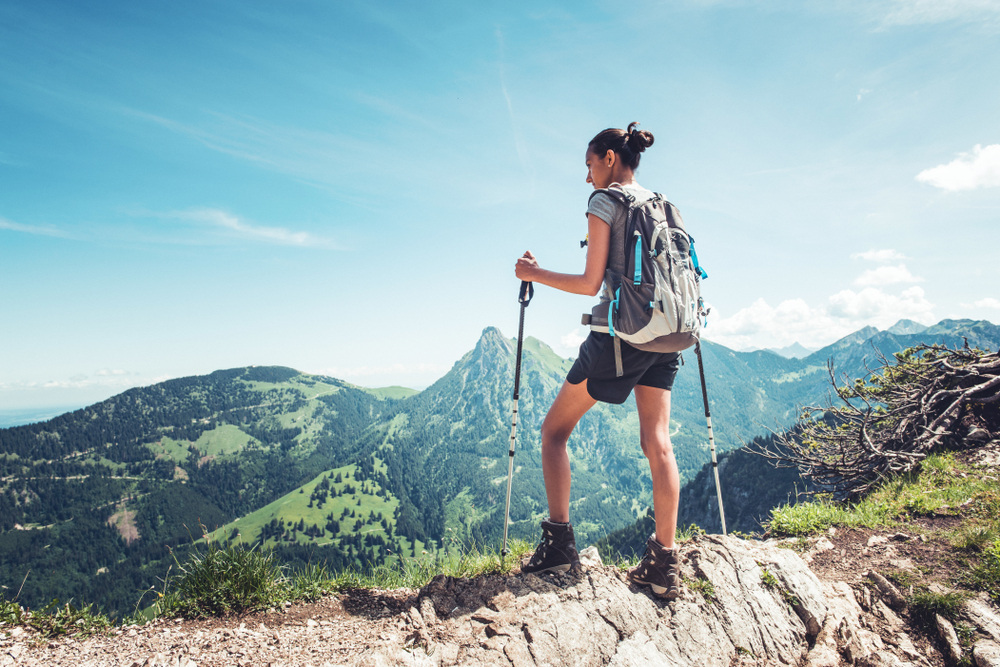
The beauty and tranquility that can be offered by Mother Nature is usually a great way to dilute the stress of the daily grind. However, there are certain considerations that you must keep in mind to reduce untoward incidents––and have as much fun as you possibly can.
If you are a novice hiker, you might be at a loss on how to go about it. The list below shares what’s essential for your very first hike––in order of importance.
1. Choose a Trail that is Suited to Your Fitness Level
The best way to increase your chances of surviving any endeavor is to carefully plan ahead. Hence, if you wish to make your first hiking trip memorable in the right way, you must choose a trail that suits your current fitness level.
Given that most hikers post great photos of their adventures, it can be easy to underestimate the trail level if you just rely on “Instagrammable” views. Here are some of the things that you should take note of when you do your trail research:
- Trail difficulty and trail type
- Trail length
- Elevation gain
- Hiker reviews
- Best months to go
Once you start your hike, make sure that you don’t rush into it. Pacing is vital to a successful hike. You are not in a competition—you are here to enjoy what’s around yo
2. Prepare an Appropriate Hiking Pack
The contents of your hiking pack will depend on the weather and the season you’re currently in. Outdoorcommand has a number of buyer’s guides to help you choose which gears are best suited for your upcoming adventure. Here are the bare essentials that must you must bring with you in any hike:
- Daypack: 20L to 35L capacity should be enough, though you can go for bigger ones if you eventually plan to level up.
- Water Bottle or Hydration Pack: The general rule is 500mL of water for every hour of hiking.
- Trail Food: Go for food items that don’t need cooking, such as dried fruits, energy bars, biscuits, and nuts.
- Headlamp or Flashlight: You may not plan on night hiking, but you never know when it would come handy.
- Multi-tool or Knife: These will always prove to be useful at one point or another.
- Navigation Device: This can be a compass, a map, or a GPS device. The trail may be well-labeled, but it’s better to be prepared.
- First Aid Kit: Include antihistamines, antiseptics, bandages, pain killers, and tweezers, just to name a few.
- Extra Clothes: Weather conditions can be unpredictable, so you’re better off bringing some extra clothes.
3. Wear the Right Clothes
It might be tempting to choose stylish clothes just to look good on your photos, but you will be sorry if you wear the wrong clothes and footwear to your hike. For clothes, go for moisture-wicking fabrics and wool (for cold weather hikes) as these materials dry quickly.

You should also bring sun protection accessories such as hats and sunglasses if you are hiking in the heat. Make sure that you do your research on the best hiking clothes for men and women so that you’re well-protected when hiking day comes.
4. Fuel and Hydrate Adequately
The importance of hydrating before, during, and after the hike cannot be stressed enough. Additionally, snacks can also keep you going when you’re already feeling weak. Make sure that you also pack a “victory snack,” or the snack that you will eat at the end of the hike. This will serve as your reward for a job well done.
5. Follow Outdoor Etiquette
“Leave No Trace” is probably the most widely known outdoor etiquette in existence. It just simply means that you should clean up after yourself, and leave the trails exactly as you found it––or even better than you found it, if you chanced upon it in bad condition.
Be considerate of other people and the wildlife that live in the area. As the saying goes, “Take nothing but pictures, leave nothing but footprints.”
Conclusion
Even if it might take a lot of physical effort, hiking can be a tremendously rewarding experience. The key to surviving hikes is to ensure that you know exactly what you are getting yourself into. If you are fully prepared for the challenges of the trails, you’d surely enjoy your first hiking trip.
How To Choose The Right Boat Hook
Boat owners need a lot of tools and equipment so that the boat functions as expected. Right form oars and engine fuel to boat hooks, every element needs to come together well so that the boat’s performance is as per the owner’s needs.
If you have been out sailing or have some experience on a boat, you must have understood the need for boat hooks. Boat hooks are an important aid for pushing, pulling and retrieval of objects from the sea. These not only help in retaining ropes, objects or boats in the water but are also used for docking and undocking the boat. With the wide range of features and functions available with the boat hooks, it becomes easy to get objects that are submerged below the sea level.

Aside from docking and undocking, you can use these boat hooks for the following purposes:
- Fishing objects out of the water, like buckets, hats, or any of your much-loved things. Generally, it happens more than you would think
- When you want to pass objects to someone else on your boat
- Cutting through objects
- When you want to test water depth
- Pushing yourself off boats that you have drifted too close to
- Putting ropes on bollards that you cannot reach
- Pushing yourself off the dock when there is a blustery weather
- Passing rope up to your lock assistant
- To grab objects those are rung on walls
Different boats have different requirements. It is, therefore, important to choose the boat hook suitable for your boat. Be it boat loops or electrical remote hooks, every type of boat hook perform a separate set of function. Selecting the right boat hook could be confusing if you are new to this. Here are a few boat hooks for you to choose from:
- Boat Loops: Boat loops are gaining a lot of popularity as boating equipment these days. Boat loops are very versatile and can be used for commercial or recreational purposes alike. The boat loops usually have a hook attached to them which helps in launching or retrieving things out of the water. The boat loops by RS Marine have a quick lock and release hook mechanism along with a flexible loop. You can order these great quality boat loops from rsmarine.com.
- Telescopic Boat Hooks: Telescopic boat hooks are designed for heavy boats. These boat hooks can stand a lot of force and don’t break easily. These boat hooks are of either 4 or 6 feet and can be extended to a length of 8 and 12 feet. You should buy a telescopic boat hook if you are using a heavy boat, to maximize effectiveness. This type of boat hook can be used for docking, undocking, and pulling up lines. This type of tough boat lock is a valuable asset when launching, docking, or retrieving your favorite things.
- Electrical Remote Hooks: Remote hooks have an electric system along with a controlling remote which is used to lift as well as perform other functions. The biggest advantage of such boat hooks is that the owner doesn’t have to be present near the hook all the time. Choose an electrical remote hook if you don’t have enough manpower on the boat.
- Economy Boat Hooks: If you have a small boat, this could be the best option for you. These boat hooks are lightweight and have special air chambers which make it easy to float. Economy boat hooks are relatively cheaper and are the best option available for people with small boats.
- Snap Hooks: Snap hooks are the best option for you if you use sailboats. Snap hooks function best for mooring as well as fastening purposes. These are made of stainless steel and have a spring for quick attachment and release. These are very versatile but work best for all the needs of a sailboat. If you own a sailboat and want to make mooring easier, snap-hooks could be the right thing for you.
Where can you buy them?
Any store that carries boating equipment should have a selection of hooks. If not then you can always buy them online from websites like eBay, Amazon.
To conclude
Different boats require different types of boat hooks. However, if you are new, it might be difficult to understand what boat hooks work best for your boat. In such cases, the boat loop is a savior.
Boat loops can be used on any kind of boat and perform a range of functions like mooring, docking, and revival of objects. The boat loops on sale by RS Marine are not only of great quality but are also priced reasonably. Get a boat loop today to make your boating experience a lot more relaxed and easy.

